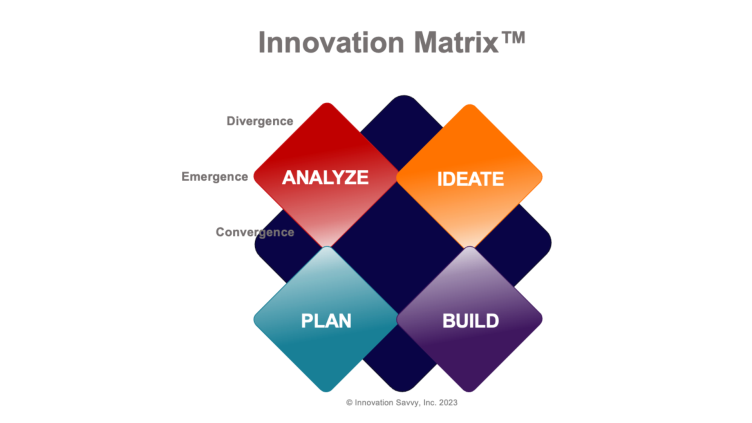
When we started the succession planning process with a client a couple years ago, I was surprised that the leading CEO candidate was a “tree person” because the outgoing CEO recommending this candidate to replace her was a “forest person.”
The firm had grown through a focus on innovation under the outgoing “Forest” CEO’s tenure, establishing a unique position in their industry. She led with a sense of urgency, a focus on future potential, with only essential systems and process.
The “Tree” CEO candidate was a classic strategic planner, clarifying strategic priorities and the necessary structures to ensure implementation. He is more cautious, more methodical in his approach.
The continuum of trees to forest
When it comes to how much time and energy each person naturally spends gathering and sharing information, about 20% of the population insists on diving deep into the details, the specifics, the nuances, the particulars, the minutiae. They instinctively insist on beginning the creative process in the Analyze stage (see the Innovation Matrix™ diagram.)
This is how the Tree CEO candidate was naturally wired.
Tree people can…and will…tell you the number of trees, their age, soil conditions, seasonal high and lows, rainfall averages…and on and on. And on. They’ve done detailed research.
When I asked a Gatorade Packaging Engineer how much a gallon of water weighs, his response was 8 pounds followed by 7 or 8 decimal points of accuracy. He is definitely a tree person.
Another 20% of the population resists spending time and energy gathering and sharing data. They instinctively summarize information, distilling the essence. In the creative process, they skip the Analyze stage and jump directly into Ideate, Plan, or Build. They return to it later, but spend less time and energy doing it.
Forest people simplify, they focus on the bottom line…”it’s a forest.”
The remaining 60% of the population fall somewhere in the mid zone of the continuum. They assist those who insist on fact finding and those who resist fact finding. They can be effective translators that bridge the often challenging, frustrating communication gap between tree people and forest people.
The outgoing Forest CEO instinctively initiated the creative process with Ideating and was naturally a bridge in fact finding, distilling the details to extract meaning.
Patterns of Divergence < Emergence > Convergence
In the creative process, the Analyze stage is essential to ensure we’re solving the right problem, that we understand the pain points in the marketplace, and establish strategic priorities that our products or services need to resolve.
The Analyze diamond in the Innovation Matrix™ reflects our movement from divergent information exploration and gathering, to emerging insights, to finally converging on key pain points to be solved.
The process of gathering information is divergent, expansive…it requires doing research broadly, understanding the nuances of stakeholder needs, diving into the details.
But information isn’t valuable until we translate it into insight. When meaningful understanding emerges, that’s when we’re turning the corner of the Analyze stage and move toward clarifying our bottom line, converging on the strategic priorities that our creative solutions must deliver.
Design Thinking and other processes have identified the movements of diverge and converge, for both problems and solutions.
But what has been missing is an understanding of the human dynamics of innovation, of the creative process. How people instinctively insist, assist, and resist throughout each stage of Analyze, Ideate, Plan, and Build.
Why we need both tree people and forest people on our teams
To move most efficiently and effectively through the creative process, it’s helpful to have people on our teams who naturally fall in different zones of the continuum from tree people to forest people.
We need people to ask probing questions, dive deep into the research, and explore the nuances of the data until valuable insights emerge.
However, teams with too much “tree energy” get stuck in analysis paralysis…moving slowly, debating and deliberating. Deliberating and debating.
Too much “forest energy” and teams are likely to miss key facts, spinning with great ideas but failing to ensure their brilliant solutions are meeting an unmet need.
If there’s no “assist” energy, there can be an accelerator-brake back-and-forth between those instinctively moving with simplicity and urgency versus those waiting until all of the details are examined.
Why leaders need to cover both the trees and the forest
Regardless of where you fall on the fact-finding continuum, from forest to trees, leaders must ensure the detailed research is being done and the “so what’s” are distilled as quickly and accurately as possible.
Tree leaders must develop the learned behavior to pull themselves (and their teams) out of the weeds. To gather essential information, make meaning from it, and move forward more quickly than their instincts would naturally drive.
Forest leaders must develop the learned behavior to ensure the detailed analyses are completed, that they’re ensuring they have a thorough understanding of the stakeholder pain points and needs so potential solutions can be evaluated against these criteria.
The “Tree” CEO, now in his role for a year, is using his natural strengths to lead the firm through an important phase of scaling. His instincts to establish strategic priorities and develop thorough implementation plans are a great fit for this stage of the firm’s life cycle.
What energy is most needed on your team?
As you pay attention to the patterns on your teams, notice who brings tree energy and who brings forest energy. When you know where you’re at within the Analyze diamond, it can guide you to what’s needed to ensure effective and efficient movement through this important stage of the creative process.
If you’d like insights into your unique creative problem-solving strengths and how our Customized Team Leadership Programs could help your team, we’d love to talk with you. You can find more information at InnovationSavvy.com or